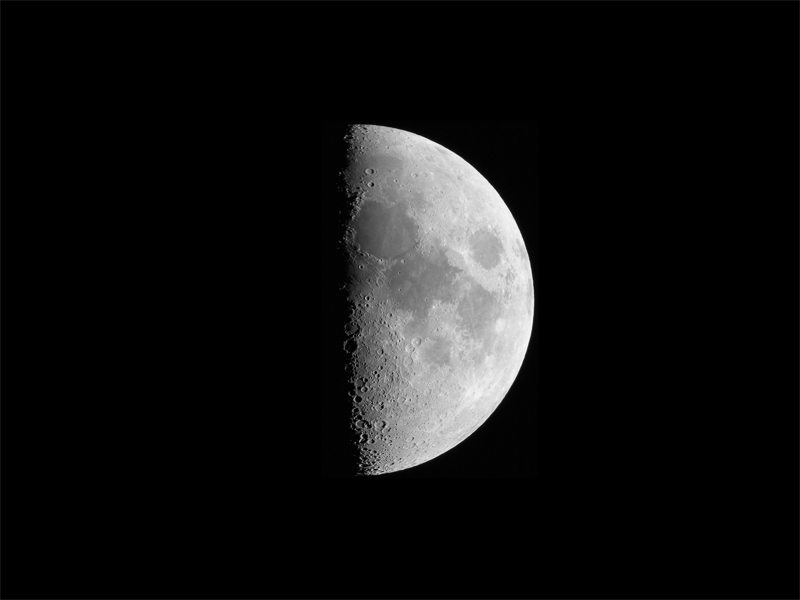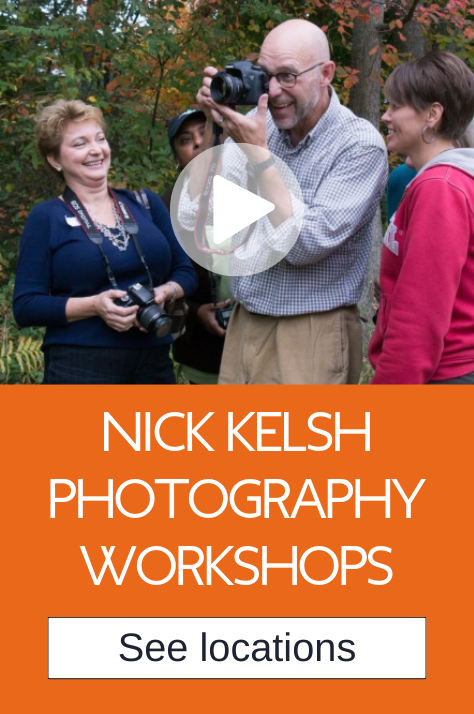If you want to see some craters on the surface of the moon you need to shoot it when the moon is NOT full. The half moon is a beautiful thing.
Every once in a while there’s a big Bruhaha about the appearance of the Super Moon. The moon apparently closer to the earth than it’s been in the last thousand years or since last March depending on who you ask. It happens about every two years.
I put Super Moons and Super Models in the same category. They’re both inventions of media hype. First of all, there’s no such thing as a Super Model—some are just better than others. And the moon can’t be super because there’s not another not-so-super one to compare it to—there’s only one moon. It may be marginally closer to the earth than last month, but it’s still the same moon.
And I do love the moon. I’m actually an astronomy geek and own three wonderful telescopes and have spent many nights over the last 25 years getting lost in the craters of the moon. For me, looking at the moon through a telescope is like having the ocean in your backyard. It’s absolutely one of the great sights in all of nature.
So I get a little twisted when people who should know better start getting innocent photographers all jazzed up to photograph a full moon because it’s somehow reached super status. The moon is a joy all the time—it’s a wonderful photo subject. Ironically, if I were to designate a moon as officially super photogenic it would not be a full moon. It would be a half moon, and the next one that’s conveniently timed to be photographed—that’s straight over head in the evening—will be next month, and the month after that, and the month after that, and so on until the end of the universe as we know it.
When the moon is at half-phase it’s being lit from the side. That side-lighting produces shadows and highlights on the craters and makes them look like the mountains and valleys that they are. It becomes three-dimensional.
When the moon is full, the light is coming from our point of view—we are right in between the sun and the moon. There are no shadows and everything looks flat. For that reason, most amateur astronomers agree that the worst time to look at the moon is when it’s full.
So I am now declaring that the REAL Super Moon is coming next month. Here are a few tips for photographing the moon. And you don’t have to wait for the a Super Moon to use them.
- Put your camera on manual focus.
- Put your exposure on manual.
- Put your ISO on 200 for starters.
- Put your shutter speed on 500th of a second.
- Put your f-stop on f5.6 or so.
- Use the longest lens you have or zoom in as far as you can with whatever lens you have. Even then the moon will look shockingly small through the viewfinder.
- Shoot the largest files that your camera can shoot. You are going to crop into the picture quite dramatically to see those craters, so you need all the information you can get.
- If you own a tripod use it. Even at a 500th or 250th of a second you want the camera to be really still. When you crop way in the slightest blur starts to show up.
- Shoot RAW if you know how.
You may have noticed that these settings look suspiciously like you’re getting ready to photograph something in broad daylight. (Think about it— a 500TH of a second at NIGHT!) In the case of the moon, that’s almost true. The moon is an object being hit by direct sunlight. It is, however, being viewed through the earth’s atmosphere which does dim things down, so you are going to play with your exposures a bit. The settings I gave you are just to get you in the ballpark.
Just about everyone who’s ever photographed the moon at night overexposes it. It’s hard to believe you’re photographing a sunlight object when you’re standing in the dark. It’s counter-intuitive, to be sure.
Just about all pictures of the moon can do with some additional contrast. They need to be snapped up a bit.
And for you science history buffs out there, bear in mind that whatever image of the moon you get with this process, it’s a better look at the moon than Galileo ever had in his lifetime looking through the primitive telescopes he used to change our entire view of the universe.




